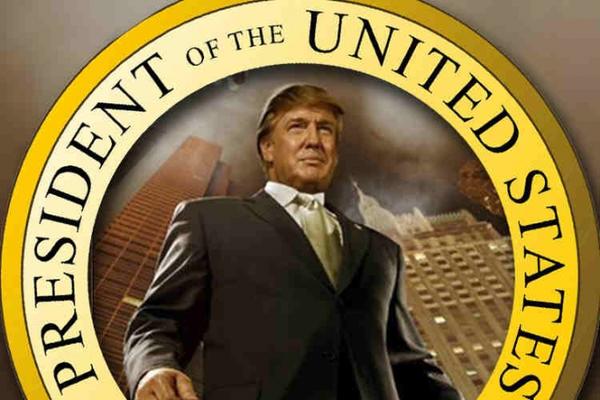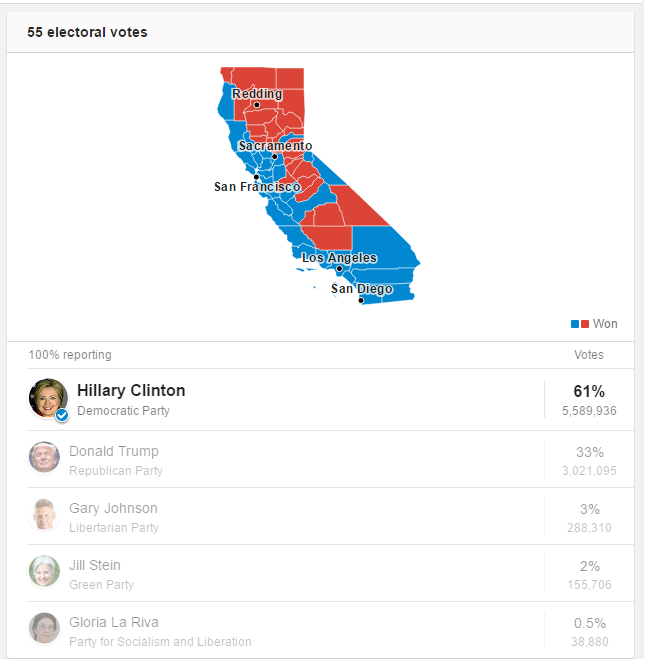
Some that are not happy with the election results are trying to present the case that the Electoral College isn’t a fair system and that it disenfranchises voters.
Usually this argument is presented when a candidate wins the Electoral College but doesn’t win the popular vote which happened in the 2016 Election between Trump and Clinton.
Unfortunately, the argument is oftentimes seen as “whining” because both candidates are well aware of what the Electoral College is and how it works before getting into the race.
Campaign strategies are developed and implemented based on the rules of this system. Judging the results of an election by anything other than the Electoral College is completely irrelevant and meaningless as it undermines the campaign strategies implemented.
Considering that in a state like California, every 1% of the 2016 vote was worth about 90,000 votes — it would only take a few percentage points to make up the difference of the 2016 popular vote between the two major candidates.
Could Donald Trump have gotten another 5 or even 10% of the California vote?
Let’s examine some numbers.
In 2016 the state of California had about 17.9 million registered voters. Of those 17.9 million, 44.8% were registered as Democrat (about 8 million), 27.3% registered as Republicans (about 4.88 million), and the rest were considered independents.
Now, in California, as with most states, whomever has the most votes wins all 55 of its electoral votes.
Obviously, the Republicans are at a disadvantage in this state, hence, they do not campaign or even bother to come here much, if at all. This strategy makes sense because they focus on states they can win electoral votes in.
What this also means for Republican voters in the state is that since they are so far out numbered, it doesn’t make any sense to really show up at the polls because the same 55 electoral votes go to the Democratic candidate whether they receive 100% of the votes, 60%, or any amount more than the next candidate in line.
Now let’s see how many actually showed up and compare the numbers.
In the 2016 election just over 9 million voters showed up to the polls, that’s slightly more than half. About 5.5 million voted for the Democratic candidate and about 3 million voted for the Republican candidate.
This leaves a massive amount of people out of the equation.
Even if all of the votes Donald Trump received were purely Republican, it equates to only about 61% of the registered Republicans and if we apply the same math to Hillary Clinton we see that about 69% of Democrats would have came out to vote for her.
This does not include the large number of independents, however, if we make these percentages equal that would mean another 8% of California’s 4.88 million republicans could have came out to vote for Trump or about 390,000 people which could easily close the popular vote gap.
If we include independents, then yes, there are plenty of people left in just a state like California to close the popular vote gap.
You see in states like California, the Republican voter has little or no incentive to cast a vote due to the overwhelming majority of Democrats in this state, other than to exercise their right to vote.
At the end of the day, even if all 4.88 million Republicans showed up to vote, the Democrats would have easily defeated them with only 69% of their voter base.
Because of the electoral college, there is no incentive for Republicans to vote in this state and no incentive for a Republican candidate to visit this state because to receive anything they would have to get a full Republican turnout and almost all Independents on their side — this is not a winning strategy.
Could Donald Trump have won the popular vote?
Considering that his campaign strategy was more effective than Hillary Clinton’s in winning the Electoral Vote, it would be kind of stupid for us to think that if the system required a candidate to win the popular vote, that Donald Trump wouldn’t have won that as well.
If electing the president was changed to a popular vote you would see a higher Republican turnout in states like California and you would have seen campaigns focusing on only population dense areas.
Instead of Trump losing by 28 points to Hillary Clinton in California it is very possible and likely he could have closed that gap tremendously by campaigning in the state, but again, that’s not how you win the presidency.
What if we switched to a hybrid system used by most states in the primaries where Electoral Votes are split proportionately between candidates based on voter percentage?
Well I ran those numbers for you too.
To illustrate how this works: In California, a state worth 55 electoral votes, Hillary Clinton would have received 34 and Donald Trump would have received 21 based on the voter percentages.
Seems like a more fair system right?
After compiling all the results state by state we would end up with the following:
Donald Trump – 278
Hillary Clinton – 261
Donald Trump would have still received enough Electoral Votes to win the election if the Electoral College were split proportionately based on voter percentage.
So why does the Electoral College exist?
Here is an excerpt quoting James Madison and Alexander Hamilton on the reasoning for the Electoral College.
The reason that the Constitution calls for this extra layer, rather than just providing for the direct election of the president, is that most of the nation’s founders were actually rather afraid of democracy. James Madison worried about what he called “factions,” which he defined as groups of citizens who have a common interest in some proposal that would either violate the rights of other citizens or would harm the nation as a whole. Madison’s fear — which Alexis de Tocqueville later dubbed “the tyranny of the majority” — was that a faction could grow to encompass more than 50% of the population, at which point it could “sacrifice to its ruling passion or interest both the public good and the rights of other citizens.” Madison has a solution for tyranny of the majority: “A republic, by which I mean a government in which the scheme of representation takes place, opens a different prospect, and promises the cure for which we are seeking.”
As Alexander Hamilton writes in “The Federalist Papers,” the Constitution is designed to ensure “that the office of President will never fall to the lot of any man who is not in an eminent degree endowed with the requisite qualifications.” The point of the Electoral College is to preserve “the sense of the people,” while at the same time ensuring that a president is chosen “by men most capable of analyzing the qualities adapted to the station, and acting under circumstances favorable to deliberation, and to a judicious combination of all the reasons and inducements which were proper to govern their choice.”
Whether you like this system or not, it can only be modified by an amendment to the constitution which requires an extreme effort including both houses of Congress to propose the amendment with over 2/3rds vote and then 3/4ths the state legislatures approving it.
This has been attempted hundreds of times but has only been successful 27 times since September of 1787.
While the Electoral College is most likely here to stay, the states do have the discretion to award Electoral Votes however they please, which means there could be a push to have the states begin awarding them proportionately, however, this would not have changed the 2016 outcome.

Leave a Reply